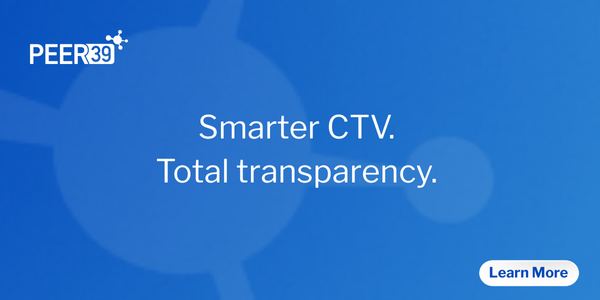A quarter of all Connected TV (CTV) bid requests can’t be trusted.
That doesn’t mean fraud every time. Sometimes, it’s incomplete data. Sometimes, it’s oversimplified or mislabeled content. And sometimes, it’s more intentional misrepresentation. But the effect is the same: Advertisers don’t know if they’re getting what they paid for and publishers can’t be sure they’re getting fair value for their inventory.
If this feels familiar, it should. Digital advertising has been solving “trust gaps” for decades – first with independent ad servers, then with verification companies, then with viewability standards. In each case, the industry introduced third-party mechanisms so buyers and sellers could transact with confidence.
What’s different with CTV is what needs to be trusted: the content itself.
Genre isn’t enough, and it’s costing everyone
If publishers pass any contextual signals at all, it’s usually a single genre. But self-declared genres in the bidstream are neither standardized nor nuanced. In Peer39’s analysis of just one day’s worth of traffic, more than a quarter (25.2%) of high-volume items came through with no genre at all or simply as “other.”
“Other” is, essentially, a dumping ground for complex, multi-genre content that buyers and sellers can’t transact against. When the 5% of requests tagged as “other” were reclassified through Peer39 authentication, they broke down into News, Entertainment, Comedy (22.8%); News, Talk (19.6%); Talk, Interview, Politics, News (13.0%); News, Interview, Politics, Public affairs (9.8%); and Drama, Medical (5.4%).
But “other” is just the most obvious example. Across the board, self-declared genres collapse nuance into buckets that mislead buyers and undersell publishers.
The same problem shows up in “news.” Of the 15.7% of traffic labeled “news,” only 42.3% was actually plain news. The rest spanned everything from Local News and Business/Financial News to hybrids like News, Sports, Talk; News, Politics; and News, Entertainment, Comedy. Lumping all of that under one label is oversimplification at best and, too often, actively misrepresents what’s on-screen.
Here’s the real takeaway: When content has no genre attached to it, is mislabeled as “other” or gets overgeneralized as “news,” it robs advertisers of the ability to target or avoid with precision and robs publishers of the chance to attract more diverse demand.
More signals, more bidders
A single genre string – or worse, “other” – forces everyone to leave money on the table. By contrast, the more accurately a piece of content is described, the more reasons buyers have to bid on it.
A show tagged simply as “Western” will only attract buyers seeking Westerns. But if it’s correctly tagged as “Western, Action, Comedy,” it becomes relevant to a wider pool of buyers. In programmatic, that means more bids competing for the same impression, thereby driving value for the publisher and helping advertisers find exactly what they want.
That’s the opposite of today’s “other” problem, where valuable impressions are dumped into a bucket nobody can transact against with efficiency.
Program-level IDs: The missing key
In display, the URL serves as a key that unlocks standardized metadata about a page, enabling advertisers to filter, classify and target in ways that are consistent across the web. In mobile, the app bundle ID plays the same role.
CTV needs to use its equivalent: the program-level content ID. When a TV show or movie has a unique identifier that maps to authoritative metadata, buyers and sellers both win.
Authenticated Program IDs give publishers a way to pass that identifier. Third parties like Peer39 map it against standardized sources (e.g., Gracenote) and return a richer, standardized set of attributes – including multiple genres, ratings and advisories, sports teams and venues and talent like actors and directors – that don’t depend on publishers grading their own homework. That’s the raw material advertisers need to target effectively and the transparency publishers need to get full value.
Program-level authentication is the bridge. It gives buyers confidence they’re investing in quality content in the right context and gives publishers a way to showcase the richness of their programming without spinning up massive direct sales teams. It also creates the discovery and competition that make auctions efficient.
The shift we need – now
CTV is currently working fine for the largest players who can lean on bespoke deal IDs and curated packages. But growth is coming from mid-market advertisers and midsize publishers, especially in the FAST ecosystem. These buyers don’t have the resources to manage hundreds of custom deals. They need the open exchange to work, and for the open exchange to work, it has to be transparent enough to trust.
It’s time to stop treating program context as an optional field. Just as URLs and app IDs gave display and mobile the trusted signals they needed to scale, program-level authentication must become the norm in CTV.
Here’s what that looks like:
- Publishers should pass program-level IDs mapped to an authenticated metadata backbone. That makes content discoverable to every buyer who might value it.
- Advertisers should demand more than a single genre or a familiar app logo. Insist on authenticated program-level data that lets you buy the content you want, wherever it’s legitimately distributed and with the confidence that it’s quality CTV.
- Platforms should treat authenticated IDs as first-class citizens. Normalize once against a trusted source and you can eliminate the fragmentation that keeps genre data underused.
As long as “other” remains a dumping ground – and self-declared genres remain unchecked – valuable impressions go unseen, mispriced or wasted. When program-level authentication becomes standard, buyers gain precision, publishers gain fair value, and the entire ecosystem gains trust.
At the end of the day, “other” isn’t a strategy; it’s a symptom, and it’s time we cured it.
For more articles featuring Alex White, click here.















